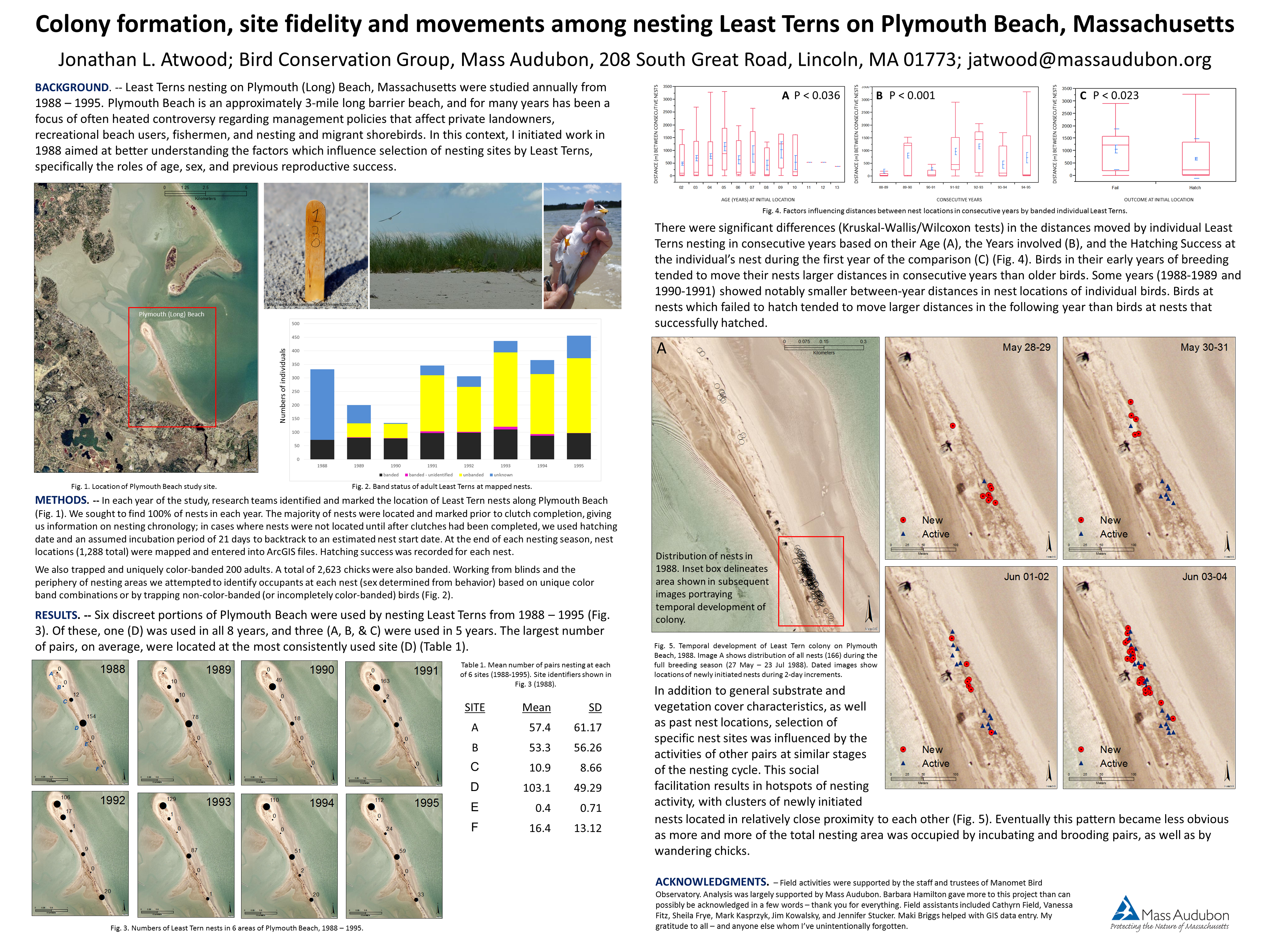Methods
Summary
Deployment of GPS tags on nesting Least Terns, followed by recovery of these tags 1 year later, will establish a solid linkage between particular breeding sites and areas used during migration and the wintering period. Identifying sites used by the species during migration and the winter season will allow us to better understand the threats faced by the species throughout the year; currently, protection of this species is focused entirely on the breeding grounds. By tagging individuals breeding at colonies located from southern Maine to New Jersey we will be able to assess whether there are links between different breeding ranges and different wintering sites.
2017 Objectives
On 11 adults trapped at 2 study colonies deploy PinPoint-10 GPS tags (http://www.lote.com/pinpoint-gps.htm) using backpack harnesses. These units will be programmed to collect 20 location fixes on a schedule designed to track movements to and from each individual’s wintering ground. Two location fixes will be obtained at the end of the 2016 breeding season (5-Jul, 5-Aug), three fixes during fall migration 2015 (30-Aug, 10-Sep), ten fixes during winter 2015-2016 (10-Oct [2 fixes],10-Nov [2], 10-Dec [2], 10-Jan [2], 10-Feb [2], 10-Mar [2], two fixes during spring migration 2016 (10-Apr, 10-May), and two fixes at the start of the 2016 breeding season (10-Jun,15-Jun). Scheduling two location fixes during each of the winter 2015-2016 dates will reduce the possibility of missed data collection during these months of primary interest.
Capture methods will follow those used by the principal investigator in California (Atwood and Massey 1988) and Massachusetts, in which a simple wire mesh basket trap will be dropped over an incubating adult. This method is less disruptive than treadle trap arrangements often used on less skittish species such as Common Terns (Sterna hirundo). Efforts will be made to trap at nests which are relatively close to hatching, since likelihood of nest abandonment decreases with length of incubation. Trapping will be done from outside of posted colony borders, or from portable blinds placed within the nesting area. All captures will be completed at times when ambient temperatures are low enough so as to not cause undue stress to incubated eggs or chicks.In addition to placement of unique color band combinations (3 Darvic bands + 1 numbered, USFWS stainless band) on each individual, morphological measurements (culmen, tarsus, wing chord, bill depth) and several breast feathers will be collected from each bird for later use in determining sex.
2018 Objectives
Survey each of the 2 study colonies, looking to locate and retrap any individuals carrying GPS tags. This work should be conducted from mid-May – mid-July.
Satellite colonies, located within 10 miles of original sites, should also be surveyed for banded birds. Trapping will be done from outside of posted colony borders, or from portable blinds placed within the nesting area.
Conduct preliminary analysis of location data from GPS tags recovered during 2018.
Challenges
The greatest challenge in such studies is the need to recapture marked individuals in Year 2 of the research. Recent analysis of year-to-year rates of recaptures of Least Terns in Massachusetts (J.L. Atwood, 2016: "Colony formation, site fidelity and movements among nesting Least Terns on Plymouth Beach, Massachusetts", presented at the Colonial Waterbird Society Annual Meeting, New Bern, North Carolina) suggests that recapturing Least Terns carrying GPS units is, while admittedly challenging, not an unreasonable expectation.

Protocols
This project has not yet shared any protocols.